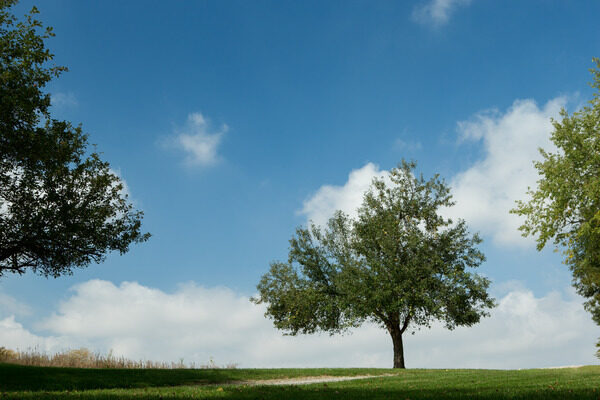
Trees can enhance any property with beauty, shade, tranquility, and home value. It Because they’re so advantageous to keep healthy, it’s crucial to learn as much as you can about tree maintenance for your property.
1. Begin landscape care, especially for new trees, in the fall
Many people wait until spring to begin thinking about their landscaping, but the pros know that getting a head start in the fall can make springtime care easier and more rewarding. There are a few important steps to take when preparing your trees for colder weather. Nip problems in the bud by practicing the PINE method: prune, inspect, nourish and extend.
- Prune unruly branches
- Inspect trees for dying limbs, insect damage or signs of disease
- Nourish trees with water and organic mulch
- Extend next year’s growing season by planting new trees in the fall
Remember that healthy, well cared for trees generally don’t die, snap, lose limbs, or house termites. Keeping your trees healthy can help prevent damage to your home and property.
2. The best care for some of your trees may be to leave them alone
Trees don’t need humans to grow. Most trees thrive where they are planted, but humans sometimes inadvertently damage the trees they’re hoping to showcase. Just parking a car underneath a tree regularly can damage the tree by tamping down the ground too hard, making it difficult for the roots to grow and shift in the soil.
Many times, homeowners want to build a structure near or around a beautiful tree to have the tree enhance the final construction project. Don’t do it! When construction is too close to trees it can damage their roots and growth space. Roots need two to three times the length of branches to grow enough to support a tree. Be sure to discuss what your trees need with a contractor, and mark off places where you don’t want construction vehicles to drive or park.
3. Observe your trees and become familiar with tree diseases
Even though leaving your trees alone can be the best way to protect them, it’s also a good idea to observe them regularly so you’ll know when they change. A diseased tree is best diagnosed early. Changes you should monitor range from rapid discoloration to stunted growth. Knowing what your tree looked like when it was healthy can also be helpful when calling an arborist — a specialist in caring for trees, shrubs and other woody plants — to consider solutions.
Getting yourself a guide to trees and their diseases will be key in considering a diagnosis for a tree on your property that’s changed noticeably. According to Mark Chisholm, a third-generation, certified arborist in New Jersey, “There are some great online tools that can help you learn how to identify the trees on your property, including the Arbor Day Foundation’s “What Tree Is That?” guide. Once you know what kinds of trees you have, you can research how to care for them and whether there are local threats including pests and diseases. You can also have an ISA-Certified arborist visit your property and assess the health of your trees. Your arborist might be able to catch potential hazards in that first visit.”
4. Weekly mulching and pruning
While you won’t need to do much to keep your trees healthy, it makes sense to take some simple precautions to ensure they last a lifetime. Surrounding the base of your trees with mulch is a great idea. Mulch will protect the tree from over-watering and over-fertilizing. Layer the mulch 2 to 3 inches thick and keep it away from the bark of the tree. Make sure to remove the older mulch before putting on a new layer.
Most trees don’t need much pruning, in fact, pruning can slow the growth because the tree must heal before it continues to grow. Good times to prune a tree are when you see dead limbs or those that have cracked because of strong wind or a rain storm. You should take the time to safely cut these limbs or branches away from the tree to prevent them from falling and possibly damaging your property.
5. Choose the right trees to plant on your property
Mark Chisholm explains, “I tell my clients to pick the right tree for the right place. That means considering how tall and wide the tree will be when it’s mature, whether it will lose its leaves in the winter, whether its shape — a tall column or a round ball — will fit in the space and how fast it will grow. You may love that beautiful oak, but will it fit when it’s fully grown?”
Around autumn, it’s also important to take into consideration if any leaves will fall onto your driveway or street. Wet leaves can be a slippery mess. Even just a single layer of wet leaves can make braking or steering difficult. Be sure to be weary of where leaves may fall, and drive slowly to avoid patches.
Make sure to prune and care for your trees to prevent roof damage to your home and to beautify your landscape.



